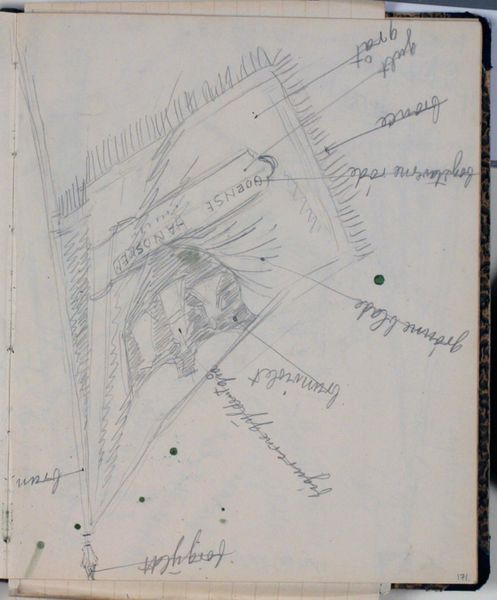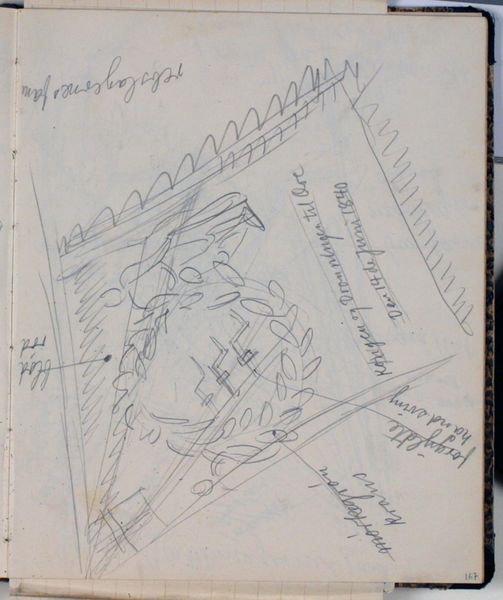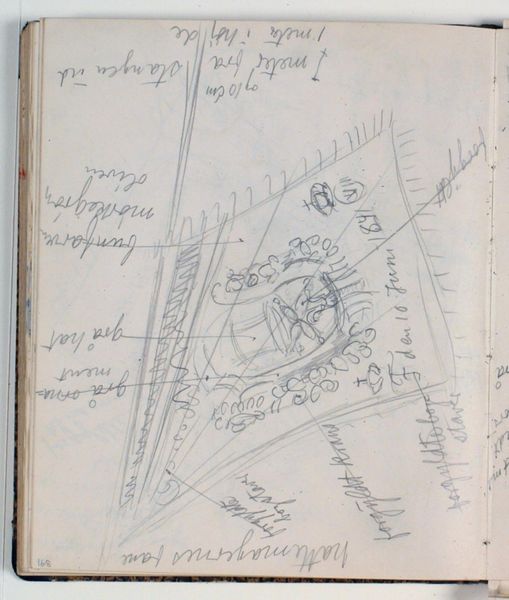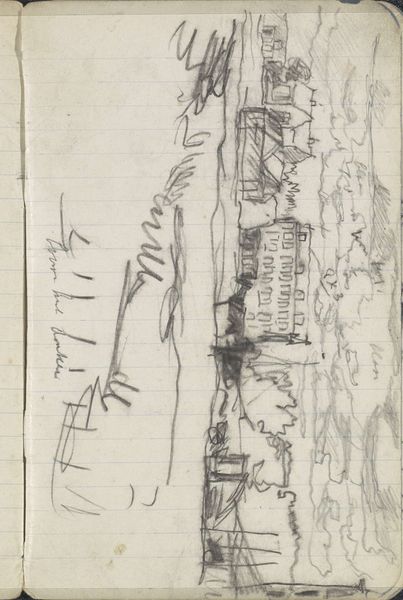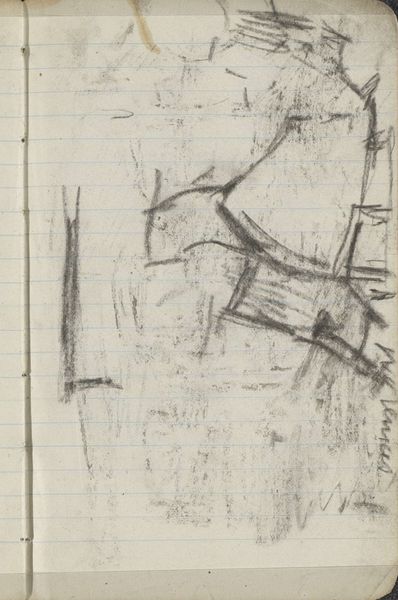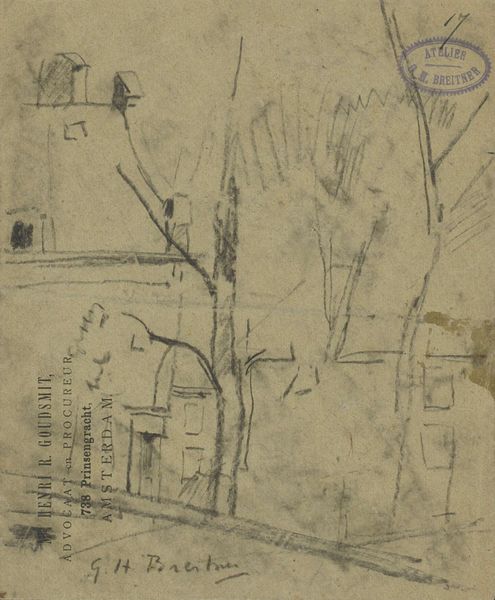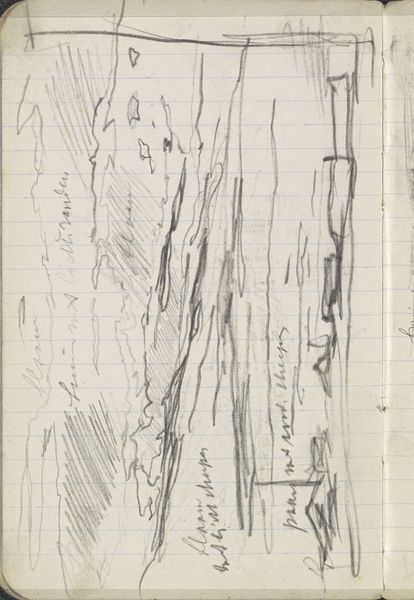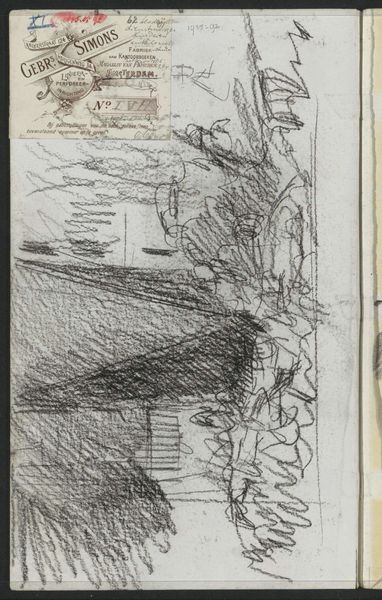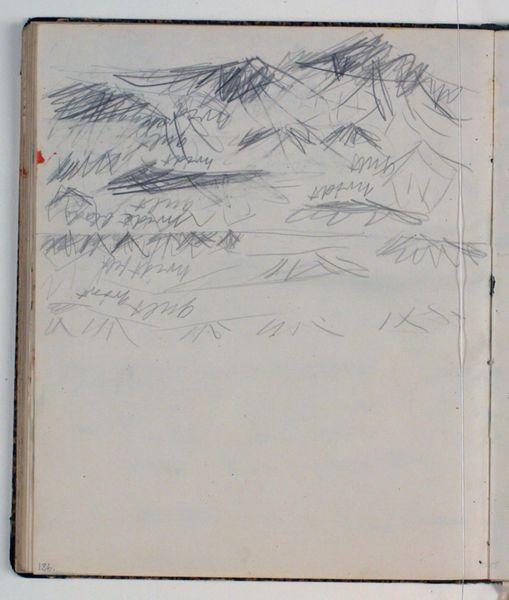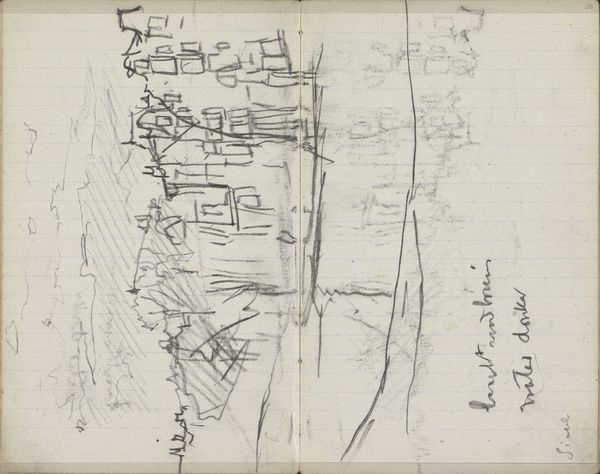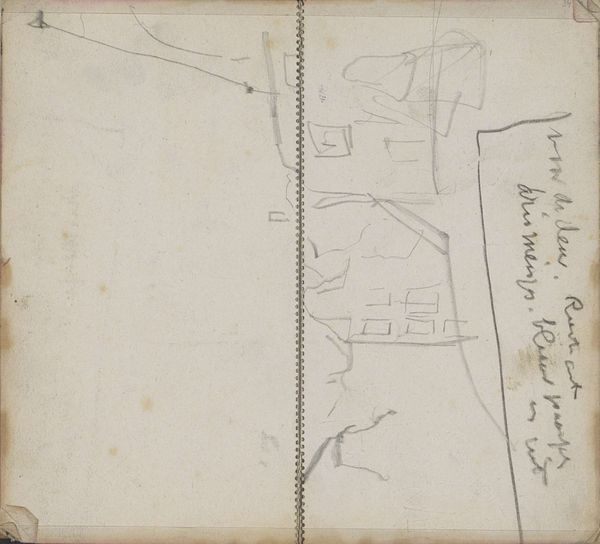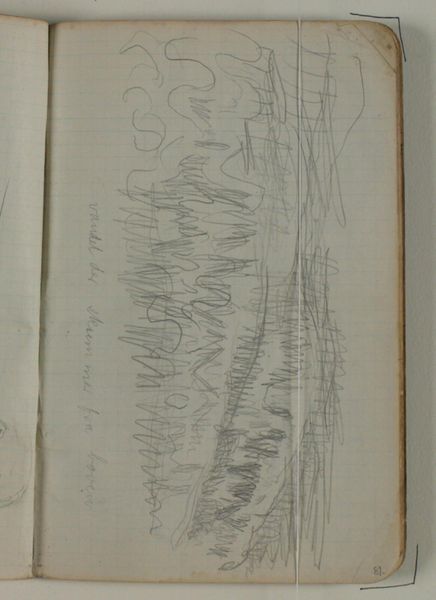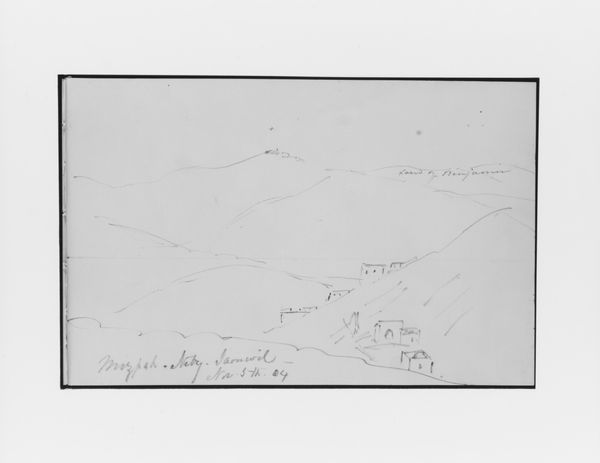
Studie af bagerlaugets fane. Farveangivelser 1930 - 1936
0:00
0:00
drawing, paper, pencil
#
drawing
#
paper
#
geometric
#
pencil
#
modernism
Dimensions: 226 mm (height) x 185 mm (width) x 112 mm (depth) (monteringsmaal), 221 mm (height) x 184 mm (width) (bladmaal)
Curator: So, here we have Niels Larsen Stevns' "Studie af bagerlaugets fane. Farveangivelser," created sometime between 1930 and 1936. It's a pencil drawing on paper, and I must say, the sketch-like quality of it gives it a very raw feel. Editor: Yes, I noticed that too! It’s very diagrammatic, with these almost architectural, geometric shapes. And, looking at the title, these are colour notations. How would you approach interpreting this work, keeping in mind its function as a study? Curator: Well, immediately, I am drawn to the materiality. Here we have a 'study' of a trade guild's banner – fundamentally about craft, labor, and the material culture of baking – being rendered in the very basic materials of pencil and paper. Do you see how the means of production of *art* – drawing – is commenting on the means of production of *bread*? What does this suggest to you? Editor: That's fascinating! It highlights the inherent connection between different types of skilled labour. The artist is using their craft to depict another craft, almost elevating baking to the level of high art through the act of representation and his skilled draughtsmanship. Curator: Precisely! And consider the "bagerlaug" – a baker's guild. Guilds were essentially economic power structures. Larsen Stevns' sketch, in detailing their banner, engages with the symbols of that power, but does so in a very understated way, as a “study”, implying something unfinished and a reflection upon an object from the commercial world, don't you think? Editor: Yes, I agree! This gives me a fresh perspective. I was focused on the formal qualities, but the socio-economic implications are quite thought-provoking! Thanks! Curator: Absolutely! Sometimes looking at the raw materials and social context helps us decode what seems, at first, very simple, perhaps even unfinished.
Comments
No comments
Be the first to comment and join the conversation on the ultimate creative platform.
